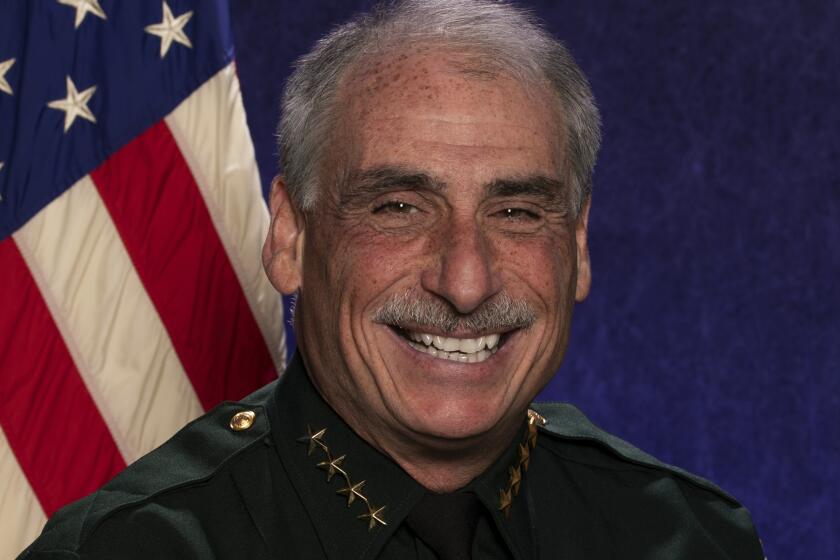Attacks on gays in Northern Ireland city increase
A friendly kiss goodnight probably made David Garnon a marked man.
As he left his buddy outside a bar and crossed the street to go home, three youths who’d seen the men embrace accosted Garnon and showered him with verbal abuse. The taunts turned physical when one of the assailants began throwing punches.
“I was walking home one minute. The next I was on the ground,” said Garnon, 31, whose attackers sped away before he could pick himself up. A black eye and a swollen lip marred his face for days; his self-confidence as an openly gay man took longer to heal.
Authorities chalked up the beating, which happened in June, as one more in a disturbing rise in anti-gay violence here in Northern Ireland’s second-largest city. Since the beginning of the year, homosexuals have fallen victim to at least 20 attacks in and around Londonderry (also known as Derry), compared with nine such incidents in all of 2009.
Police have yet to determine an explanation for the surge.
“They’re trying to discern if there’s any major pattern to it,” said David McCartney, who heads the local office of the Rainbow Project, a drop-in center for gays and lesbians. “It’s a cause of major concern for us, because so much progress has been made. We’ve changed so many attitudes.”
Indeed, the attacks come as activists prepare to celebrate a landmark Saturday: the city’s first gay pride parade, with a hoped-for attendance in the hundreds. By contrast, Belfast, the provincial capital, has hosted an annual gay pride parade for two decades; this year’s procession at the end of July drew about 10,000 spectators and several thousand participants.
The spate of gay bashings here in Londonderry and the effusive celebration in Belfast encapsulate the ambivalent attitudes toward homosexuality that persist in Northern Ireland.
The first same-sex couple to tie the knot in a legally recognized civil union in Britain were lesbians in Belfast, in late 2005. Yet not long ago, in a semi-rural neighborhood outside Londonderry, thugs terrorized a gay male couple by killing their pet cats and spray-painting a warning on their door: “You gay bastards are dead.”
Extreme feelings and outbursts of violence are no strangers to Northern Ireland, of course. The “Troubles” that plagued the region for decades before a peace accord was finally reached, brought the deaths of more than 3,500 people caught in a war of attrition that pitted Roman Catholics against Protestants and Irish nationalists against those loyal to the British crown.
The same sort of tribal mentality may now be animating attacks not just on gays and lesbians but also on ethnic minorities, such as the dozens of Roma, or Gypsies, who were driven from their homes last year in a paroxysm of racial hatred by a gang of Belfast youths.
“If you’re prepared to tolerate attacks on a Protestant or a Catholic, it’s easy to move on to justifying an attack on a black family or a gay person because you don’t like them,” said Neil Jarman, the director of the Institute for Conflict Research in Belfast. “The whole business of legitimizing crimes of prejudice becomes easy if you’ve got a culture of ... segregation.”
Public surveys have shown an increasing awareness and disapproval of discrimination against gays and lesbians. But the same studies show that about half of Northern Ireland’s residents believe sex between two people of the same gender to be wrong and only a quarter are in favor of civil partnerships.
In a society where religious identity and sectarianism remain dominant forces, anti-gay rhetoric is not uncommon. Iris Robinson, the wife of the leader of the province’s power-sharing government and a former lawmaker in her own right, denounced homosexuality as an abomination. (She later resigned from the Northern Ireland Assembly when she was caught having an affair with a 19-year-old and secretly raising money for him to open a coffee shop.)
Still, the situation for Northern Irish gays and lesbians, particularly in the larger cities, has improved markedly over the years.
Bars, clubs, restaurants and hotels now cater to a more active gay scene. Belfast alone boasts at least eight bars or clubs that welcome a gay clientele.
In part, increased visibility probably has made homosexuals a bigger target. That, combined with better incident reports by police and a greater willingness by victims to step forward, may help explain a steep rise in homophobic abuse and crimes that peaked around 2005. The number dropped the following year, but has been climbing again.
Here in Londonderry, several gay residents said in interviews that being open about their sexual orientation was far easier now; their lives are no longer consigned to the shadows.
But the recent increase in anti-gay violence is evidence that their ideal of an equal society has yet to be achieved. When choosing a route for Saturday’s parade, organizers decided, somewhat controversially, to retrace the route of a 1968 civil rights march in Londonderry that many cite as the starting point of the Troubles, after British-backed police charged the crowd with their batons.
“It’s great that it’s a celebration and it’s great that there’s a Mardi Gras atmosphere, but at the core of it, it’s about rights,” said Sharon Meenan, one of the parade’s organizers. “While times have moved on and it’s great, we’re not quite there yet.”
henry.chu@latimes.com
More to Read
Sign up for Essential California
The most important California stories and recommendations in your inbox every morning.
You may occasionally receive promotional content from the Los Angeles Times.











